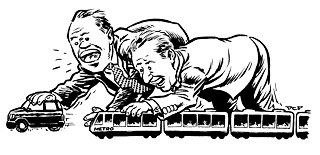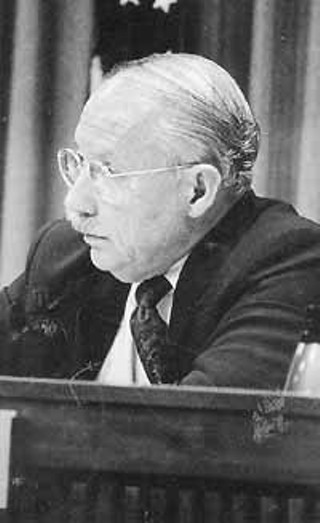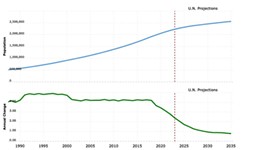Miles to Go
Coming in November: A Multi-Modal Bond Package
By Mike Clark-Madison, Fri., March 10, 2000

Now is the time for all good transportation projects to come to the aid of our community. But how are we going to pay for them? For more than 15 years, the transportation game in Central Texas has been treated as a zero-sum contest between rail and roads, infill and sprawl, cities and suburbs. But as befits a millennial experience, the year 2000 will change all that. Despite our best efforts, we will, by this time next year, be the proud owners of a multi-modal, multi-jurisdictional transportation system, including highways and transit systems and lots else besides.
As the sagas of SH 130 and Capital Metro and Smart Growth and I-35 and non-attainment and commuter rail and all the rest get blended into one big story, we realize they all share the same plot: Where is the money? For that has really been the battle for lo, these many years. Very few of us are opposed to roads, or rail, or whatever else, purely on principle. More of us are opposed to the specific alignment of SH 130, or the managerial performance of Cap Metro, or whatever other detail, but those can be fixed, at least in theory.
What we can't seem to get over, though, is that money spent on a project we don't care for could be spent instead on projects we embrace. We all seem to agree that rail, or highways, or whatever else, would be valuable; we battle, rather, over whether those investments are more valuable than others. And since we do not have the many billions required to build out all the projects we want -- or even to build them individually -- we have to make choices. Or do we?
After all, local elected, appointed, and self-appointed leaders believe, or pretend to believe, that we need everything and we need it all yesterday. That means increasing the available funding for transportation in Central Texas, and quite possibly freeing the public purse from the tight grasp of political and jurisdictional turf-keepers. But how do we do that?
Wanted: Lots of Money
The transportation debate has of late centered on its opposite poles, light rail and SH 130. But for entities that are supposed to be in ideological conflict, both Capital Metro and the Texas Turnpike Authority (TTA) have managed to arrive at the same sticky place along the same path through the funding jungle. Both have taken what were already controversial projects, made them more controversial by choosing certain alignments, and are now racing to sell them to the community at political gunpoint, because of money.
For Cap Met, it's federal money -- the current Red/Green Line starter project was at least partly tailored to appeal to the Federal Transit Administration, which, the agency claims, was all set to deep-six Austin's previous light rail proposal to start with the Red Line from East Austin to Leander. (It should be noted that this claim is disputed by some Cap Metro critics.) Switching to a line running right through Central Austin, however, has already spawned criticism from suburban leaders who feel the $1 billion project is insufficiently "regional" to justify the expense.
So far, the gambit has not worked; Austin is absent from the FTA's proposed budget for fiscal 2001. Cap Metro is relying on its crackerjack lobbying team, including former Gov. Ann Richards, to tease funds for a new project in a Democratic district out of a Republican-controlled Congress during an election year -- one in which the fate of light rail itself will be on the post-budget November ballot. It should be noted, though, that Cap Met wants out of the fiscal 2001 budget only a fraction of the total $300-mil-plus federal share for its project.
Many reasonable people have wondered whether Capital Metro should have waited until next year, if there is a next year for light rail, or whether a more "regional" system -- one that included both urban and suburban transit and perhaps inter-city commuter rail -- would not be more appealing to our elected friends in the 202 area code. But Cap Met General Manager Karen Rae notes that "we need to know our elected officials will support continuing increases in funding if we win the referendum. And Sen. [Kay Bailey] Hutchison has always gone on record saying that if this community wants light rail, she will help deliver the money."
The turnpike authority, on the other hand, already has federal money, thanks to senators Phil Gramm and Hutchison; its quest is to scare up local dollars to match. The Texas Department of Transportation couldn't make the numbers work for SH 130, which is how it got turned over to the newly created TTA, whose four Austin-area projects -- of which SH 130 is the farthest along -- would be the first bona fide state toll roads. (Dallas and Houston have highways built by local toll road districts.)
The point of a toll road is not just to collect your spare change, but to leverage that money by selling revenue bonds and amassing cash up front. To make those bonds attractive to the markets that trade them, the TTA needs as many drivers on SH 130 as possible. Since the looming toll booth will itself be a powerful disincentive to potential SH 130 traffic, TTA has compensated, at least in part, by sticking to its "western" alignment -- which travels closer to where the people are -- despite powerful objections by the three largest entities on the route, Travis County and the cities of Austin and Round Rock.
This gambit may likewise not work. In theory, only the Federal Highway Administration, the FTA's sister agency, has the power to decide an alignment. But on March 20, the local elected officials on the board of the Capital Area Metropolitan Planning Organization (CAMPO), the arbiters of all Central Texas transportation planning, will be asked to include SH 130 in the official "transportation improvement program" or TIP, without which nothing gets built anywhere. (This vote may not happen until later; federal guidelines suggest that the CAMPO long-range plan, which was supposed to be approved last year but is now not set for adoption until June, should be in place before CAMPO adds projects within it to the TIP. Exceptions are, however, made.)
The CAMPO board already voted -- unanimously -- against TTA's preferred alignment, and it is not precluded from using the TIP listing as leverage to enforce its wishes. If SH 130 is not in the TIP before summer, when Austin is expected to be declared a non-attainment area under federal air-quality standards, the TTA is in serious trouble.
Now, both Capital Metro and the TTA would loudly, and rightly, protest any claim that their difficult and risky decisions were only influenced by funding concerns. But to pretend that the current shape of both light rail and SH 130 has been wholly untrammeled by money worries is simply fatuous, and we all seem to know it.
Or at least we know it well enough to anchor our pro- and anti- opinions and efforts in the bottom line; highway backers want Capital Metro's sales tax, transit advocates want funding from the suburbs being served by SH 130, and both sides want the cities and counties in the middle to target their investments (and regulations) to support the preferred project. "The reality is that the funding game pits us against each other," says Thais Austin, the Greater Austin Chamber of Commerce's vice president of infrastructure and public policy.

"Despite talking globally, when you have to compete for the same dollars, and when those dollars aren't even enough for the individual projects, it becomes a zero-sum game," Austin continues. "It's difficult for people who are looking for a multi-modal solution to get past the conceptual stage. If there was abundance, the dialogue would change. And now there is abundance in the economy, so we have some opportunities."
Politics being politics, we haven't been able to use the planning tools at CAMPO's disposal -- the long-range plan and the TIP -- to create a multi-modal program that we can actually pay for. "According to federal law, our transportation plan is supposed to exercise fiscal restraint," says transit advocate Karen Akins, executive director of Trans Texas Alliance. "It's not supposed to be a wish list, but things you can realistically build, and you're supposed to know the funding sources. I'd like to see an objective analysis of whether we can really afford, for example, both rail and SH 130; it's irresponsible to add things to the TIP without telling the community what may have to be taken out in its place."
But are we not all profoundly sick of being asked to contemplate, advocate, and arbitrate which projects deserve to get what money when? "People's energies really need to be focused on getting the pie big enough to get all of these things done," says Ross Milloy, executive director of the Austin-San Antonio Corridor Council and the prime mover behind efforts to get regional commuter rail between the two metros. "And if we include in the whole package regional solutions -- like regional rail -- we can bring additional players to the table."
Pie Squared
There are three main ways to make the pie bigger. One is to simply add sugar from whatever bowl is nearby. This is seemingly the intent of the $75 million transportation bond package conceived, and then prematurely hatched, by Mayor Kirk Watson and, sotto voce, TTA chair Pete Winstead. This package, aimed for the same November ballot as the light rail referendum, was mostly understood to be a stomach-friendly multi-modal coating for the bitter Cap Metro pill, tacking money for highway right of way acquisition, traffic-signal improvements, and sidewalks onto the rail package.
But the Watson/Winstead bonds would also effectively, if weakly, "regionalize" the Cap Met ballot, giving suburbanites something to vote for that would directly benefit them. Or at least it would if -- as expected by many observers if not confirmed by the mayor himself -- the highway portion of the bond package went to matching federal dollars and/or acquiring right of way for SH 130 and other TTA toll roads. "As I understand it, the proposal is to use local bonds to match and get more federal money in here," says City Council Member Gus Garcia, who, along with Watson, sits on the CAMPO board. "But to be frank, I don't know where the $75 million figure came from, or what the full rationale is."
However, notes Garcia, "though I'm not a political consultant, I've been around the block a few times, and I suspect for the average guy out there stuck in traffic, a multi-modal package is going to appeal. To the more sophisticated voter who's looking at Smart Growth and non-attainment and all the rest, it doesn't make as much sense. But my guess is that there's more people who want more roads than people who don't want more roads."
Garcia's opinion is more than just chin-pulling here, since he's leading the pro-light rail forces -- organized as Citizens' Alliance for Transportation Solutions, or CATS -- into the referendum showdown in November, and if the Watson/Winstead proposal is aimed at making Cap Metro's initiative more palatable, Garcia of all people should be behind it. Elsewhere, the enthusiasm for the embryonic bond proposal is likewise well under control. "I know the mayor's talking about $75 million, but that's not a really huge amount," says Chamber of Commerce President and CEO Mark Hazelwood. "And I think that may exacerbate the political problem, because it makes people re-examine how the 1-cent [Capital Metro] tax should be allocated, and that would be unfortunate."
Perhaps the biggest problem with the mayor's proposal is that it piles city money on top of what is, ultimately, also city money. Despite Capital Metro's putative role as a regional transportation authority, 96% of its $100 million annual sales tax collection comes from within the Austin city limits. Surrounding cities -- Cedar Park, Pflugerville, and probably Leander next -- are gleefully bailing out of Cap Met, brimming with acrimony about their onerous tax commitment that, with an urban rail system, will go completely unrequited. But the transit authority is also planning to contribute heavily, with TxDOT's blessing, to high-occupancy vehicle (HOV) lane projects along I-35, MoPac, and US 183 -- investments in facilities going right through these restive 'burbs that far exceed anything our fair neighbors have ever paid into Cap Met.
Which is in turn far greater than the contribution made by Round Rock and Georgetown, which totals exactly zero. Which makes it clear why any talk of Capital Metro funding "regional" systems -- be it a light rail spur to the Dell campus in Round Rock or a commuter train all the way to the Alamo -- gives the transit agency pause. If Austin property owners are to pay for SH 130 right of way (which, as Travis County taxpayers, they will do even if Watson's bonds never see daylight), shouldn't Round Rock consumers pay for light rail, which even in its current form runs to the Williamson County line?
"If there's a comprehensive program of investments that this community and region are comfortable with, there can be a win-win," says Karen Rae. "But all the players need to have not only their needs but also their resources on the table. For a truly regional plan, we have to understand everyone's role -- not just our role -- in funding all these projects."
That would be the second way of making the pie bigger: creating mechanisms whereby every city and county in the region, along with Cap Met and TTA and TxDOT, and perhaps even the San Antonio folks as well, provides support to the whole palette of transportation options. That's already the approach being touted for commuter rail; present disagreements turn more on who should put their bucks in first. But for both urban transit and highway projects, "regionalism" does not come with a price tag attached.
Ironically, the first step may be the controversial "peer review" touted by SH 130 backers and last month approved, in altered form, by the CAMPO board. This independent consultant study was originally supposed to prioritize our individual projects and make recommendations about using available funding -- all of which sounded, considering the source, like putting rail on hold and raiding Cap Met to fund roads, which is why that version was defeated on an almost-unprecedented split vote of the CAMPO board, with city folks triumphing over suburbanites. But given that power split, when CAMPO finally decides who will conduct the peer review -- a request-for-proposals is on the street now -- and what issues it will address, it could instead be the start of what Rae envisions.
But cultivating the whole regional orchard is a lot harder work than picking the low-hanging fruit with tools like the Watson bonds. And even that is harder than waiting for money to fall from the state and federal trees, which is the third way of making the pie bigger. "I think the most equitable way would be a statewide increase in the gasoline tax, with some of that money being earmarked for urban mass transit," says Akins. "After all, a tiny percentage of the population -- affluent suburban commuters -- generates a sizable majority of the vehicle miles traveled. Financing highways instead with sales or property tax puts the burden not on the actual users of the system, but on citizens of Austin who aren't benefiting from the investment."
And it's not just progressives and transit advocates who are looking at a state gas tax increase. "We first focused on getting a fair share of funds from the Feds, and that was done," says Don Lee of the Texas Coalition of Urban Counties, which is itself part of the Texas Transportation Funding Coalition. He alludes to the increase in funding for Texas -- traditionally a "donor state" to the federal highway trust fund -- in the Transportation Equity Act for the 21st Century, or TEA-21, passed in 1998. "The next leg is the state gas tax and vehicle registration fees, so now the coalition is looking at those to see if it's appropriate to increase them. I know some [TTFC] members support an increased gas tax; I'm not sure urban counties would agree, but it has to be looked at."
Lee also highlights several financing approaches that for Texas are creative, though other states have done them for generations. One is, of course, the Turnpike Authority itself. Another is the possibility that the state will finally do what its cities and counties do and sell statewide highway bonds. "However we do it, it's clear that the way we've done business in the past doesn't work. The new economy has players like Dell Computer who need their infrastructure in the next two years, not 20. Taking decades to build infrastructure isn't acceptable any more, especially in places like Travis County."
Don't we know it, and the hard way. But maybe we are ready to put our beloved cars and trains into a new game. "We're seeing some encouraging signs -- different meetings with different people who want to bring the issues together, look at them on the same timeline, and start communicating with each other," says Hazelwood. "There's a lot of exploration going on, by rational people, of solutions that will get us away from the traditional adversarial process. People want to build a factual, thoughtful plan for how to proceed on all our needs." ![]()
Got something to say on the subject? Send a letter to the editor.








